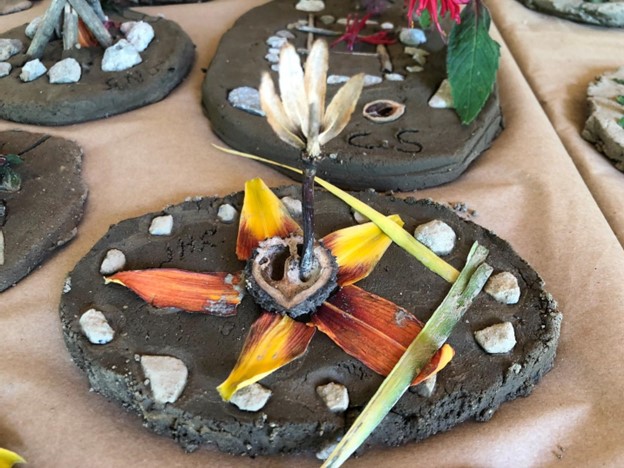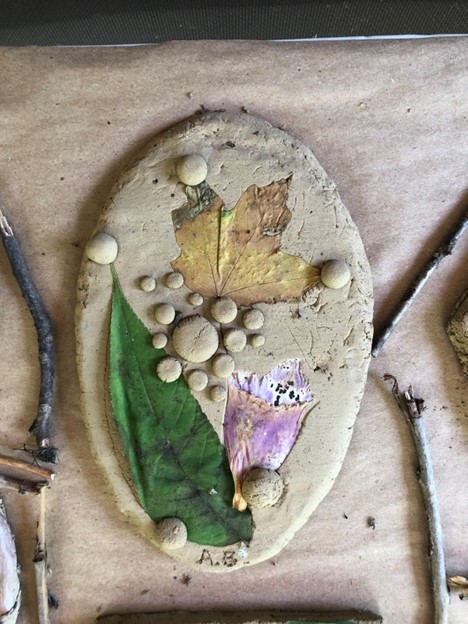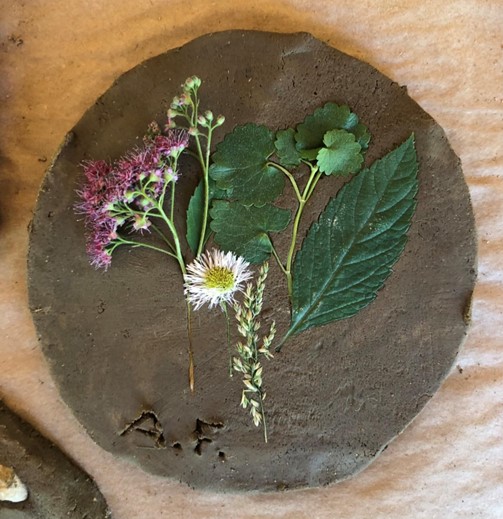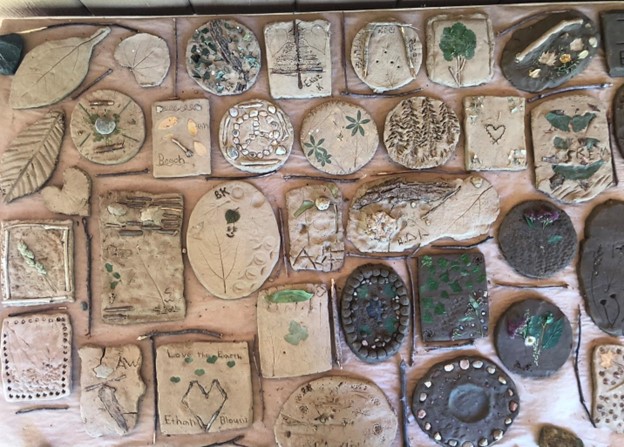This is the third of the blog series highlighting the experiences campers and staff shared this summer around our theme, Shaped Like Earth. In this post, Amy Huser, sustainability and outdoor education director, writes about the learning, creativity, and play that occurred as campers sunk their hands in the clay!
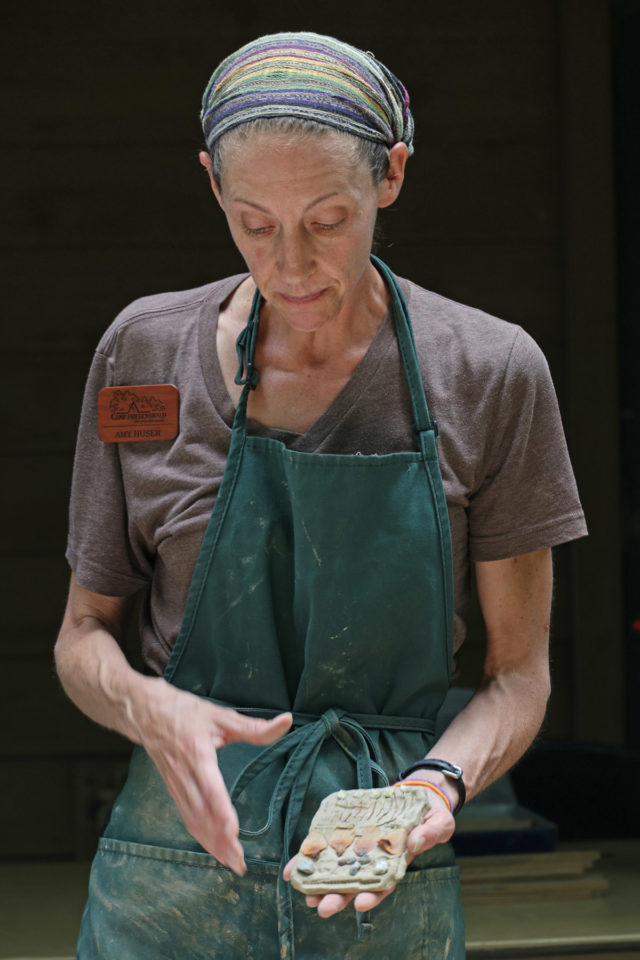
How many types of soil do you think are present at Camp Friedenswald, according to the USDA Soil Survey of this area? Did you guess more than ten? The answer is nineteen! The biodiversity of plants and animals found at Camp is literally grounded in a diverse array of soils, from the muck of the fen to the sand of the savanna and so much more. With our theme, “Shaped Like Earth”, incorporating work with clay seemed almost essential for the summer – and we were excited to use clay harvested from the soils of Camp Friedenswald. After doing a bit of a clay scavenger hunt, we found the best clay for processing in a convenient location – the new playground. When digging holes for the playground’s foundation, we came across clay deposits about four feet down. What luck! The beauty of finding clay in in a place we were already digging also meant we did not need to dig as much in the wild areas of Camp – reducing any harvesting impact on our natural ecosystems.
Thanks to the help and advice of local clay harvester and potter, Jacob Hostetler, we developed a processing method that worked for us, and so by the time summer arrived we had over 150 pounds of clay ready to be molded and shaped by campers, with over a hundred more pounds waiting for processing as the summer unfolded.
Each youth camper came to a clay nature tile session as part of their camp week. In each session we talked about this big idea, “Humans are uniquely connected to the earth because we are made from the same stuff. This creates a kinship between the earth and humans.” We asked each group of campers, “How are humans and the earth literally connected?” The conversations we had were rich and varied. We talked about the food we eat, air we breathe, water we drink, the common chemical composition of living things, the gravitational pull connecting us to the land, and even going back to the earth when we die. Campers were then instructed to go on a walk and collect items they found interesting, beautiful, or connected to. They would then use their items to decorate a clay tile. We emphasized collecting items with respect and gratitude – as fellow community members. If campers wanted to collect items on a living plant, such as a leaf or a flower, they were instructed to follow the rule of not collecting more than 10% of a population or species.
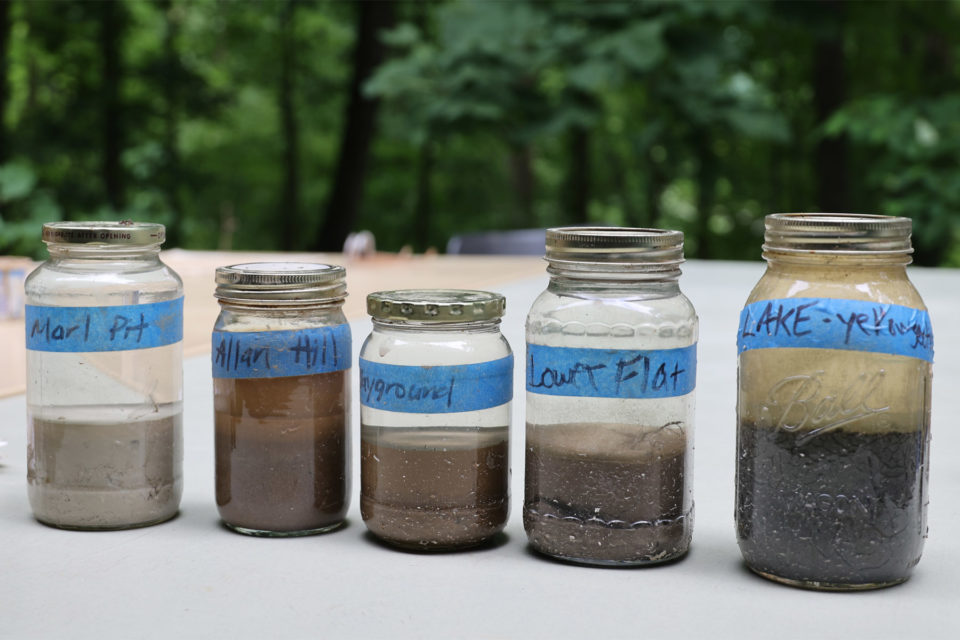
Once campers returned with their items, we viewed the differences in the composition of soils from different sites at Camp – the amount of clay, silt, and sand varied from samples taken from the savanna, the marl pit, fen, and playground area. Color varied as well – from the reddish brown of the playground soil, to the chocolate brown of the fen, and the grey of the marl pit.
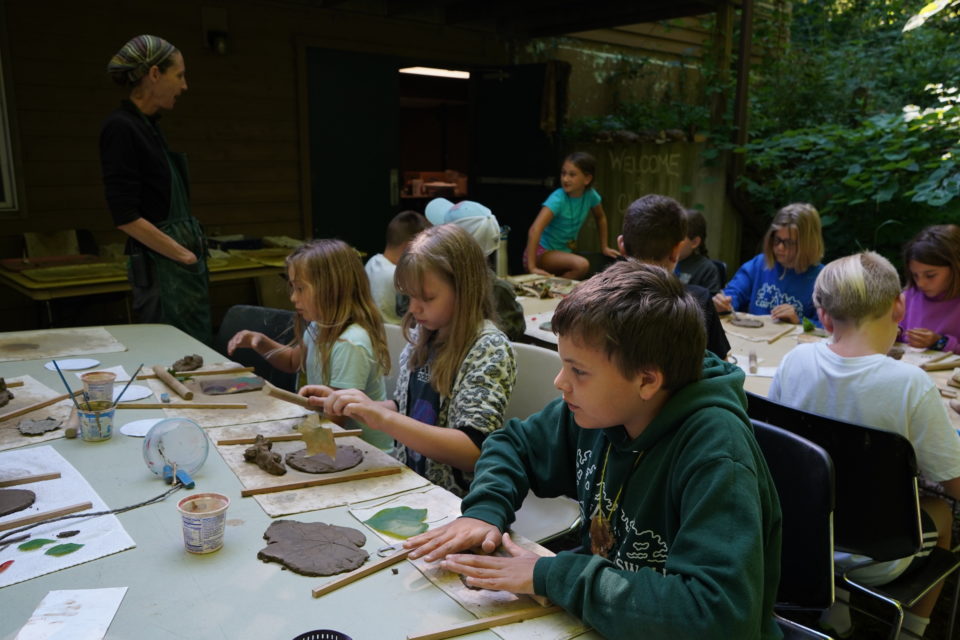
Finally, it was time to get out the camp clay. Campers made a ball and rolled it out. Then they went to town using their collected items to create their own unique design. It was so much fun observing the care and thought that campers put into creating their nature tiles, and the way they got to know their items a bit better as they worked.
Once campers were finished, we set their tiles out for display as a collective mosaic of sorts – symbols of both our individual connections to nature and our community’s collective efforts – human and non-human, all coming together to connect, reflect, and create beauty in the peaceful woods.
